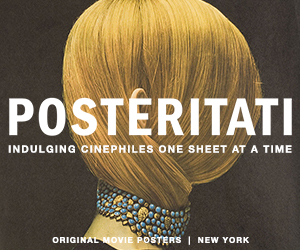It’s fitting that watching Che – Steven Soderbergh’s two-film, four-hour meditation on the Argentine revolutionary Ernesto “Che” Guevara – requires endurance, for what the movie(s) captures more than anything else is the staggering endurance that defined its subject.
It’s hard to imagine the resolve – the nearly unreasonable determination – it must have taken for Guevara to live in inhospitable environments for months at a time trying to rouse Cuban, then Bolivian, peasants for revolutions that seemed doomed for failure. Yet Che – which is being released in theaters as two separate films – puts us right there: in the brush, in the heat, in the hunger.
To do this, Soderbergh – the same dazzler behind Out of Sight and the Ocean’s Eleven films – reverts to his early, now only occasional, indie mode. Che is the least adorned four-hour historical picture I’ve ever seen.
This isn’t Che the myth – the beret-brandishing silhouette of so many hipster T-shirts – but Che the tactician and resource manager. The movie is grounded in the mundane: weapons care; food procurement; the decoding of maps. In fact, both pictures open with the image of a map – the first of Cuba, the second of South America – outlining each region’s crucial boundaries. The movie’s initial instinct is to instruct.
That doesn’t mean it isn’t political. Soderbergh may be working from his nondescript playbook and Benicio del Toro, as Che, may give a quiet, understated performance – most often he is at the corner of the frame, reading or writing while his men commiserate – yet both are involved in a subtle form of mythmaking.
Their Che is the last idealist – a Christ-like Marxist, in a sense, who remains unsullied by the more unsavory aspects of revolution.
The Argentine, the first half of Soderbergh’s opus, doesn’t spend much time, for instance, on the period after Guevara helped brothers Raul and Fidel Castro claim Cuba (a hard-won military victory Soderbergh depicts in sharp, occasional snippets rather than grand set pieces).
That’s a convenient omission for a laudatory picture, considering this was the time Guevara oversaw the controversial tribunal process that involved the imprisonment and in many cases execution of members of the Fulgencio Batista dictatorship.
Instead, the movie offers snippets of Guevara’s 1964 speech to the United Nations – edited to parallel contemporary critiques of American imperialism in the name of “freedom.” Then it’s on to Bolivia in Guerilla, the second installment, where Guevara endures more hardship, though to far less success and eventual, martyrizing death. In other words, the only Che we get here is the selfless, committed liberator.
You would think a four-hour, two-part enterprise would have time for more. Guevara’s family flits by only briefly (though perhaps that is how it felt to him during these isolated years). His participation in a failed revolt in the Congo – which occurred between Cuba and Bolivia and would seem to fit into Soderbergh’s agenda – is omitted in its entirety.
Che is exhaustive, then, yet somehow also limited. The movie has indie trappings, but in the end it’s even more admiring of its subject than a middlebrow biography picture such as Ray or Walk the Line. If there was any hint of a devil to Che Guevara, you won’t find him in Soderbergh’s intricately documented details.



